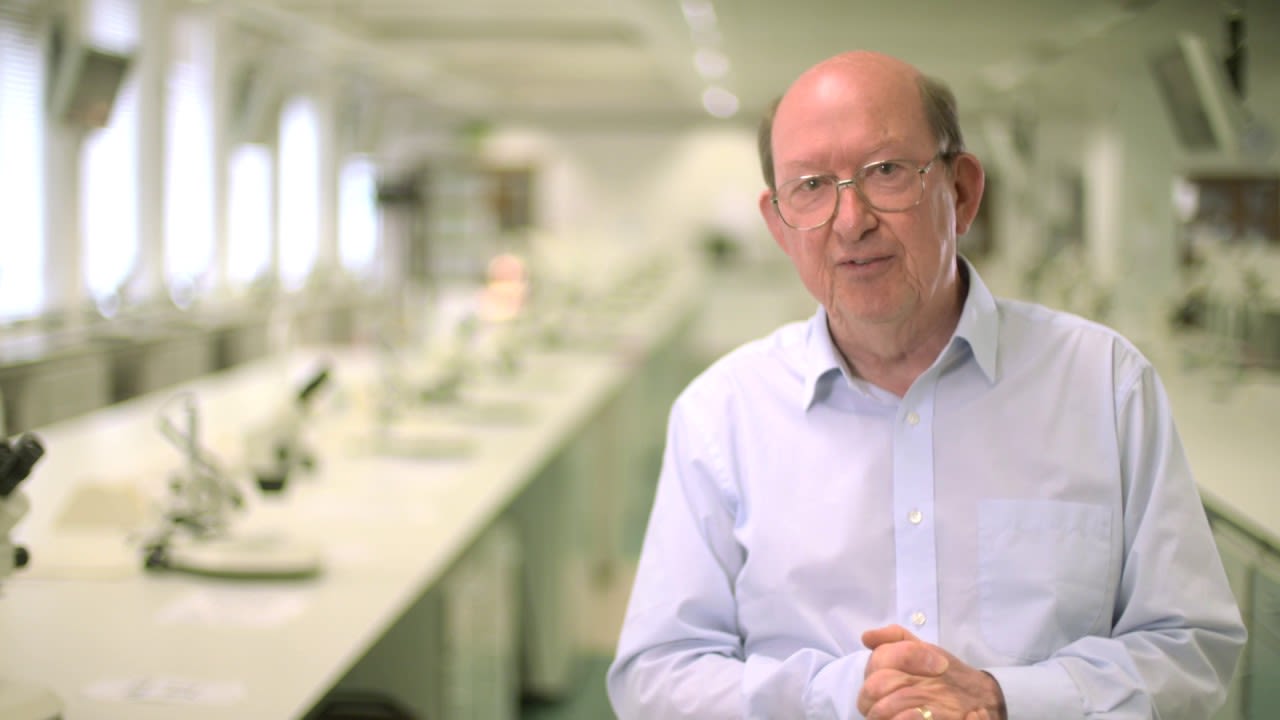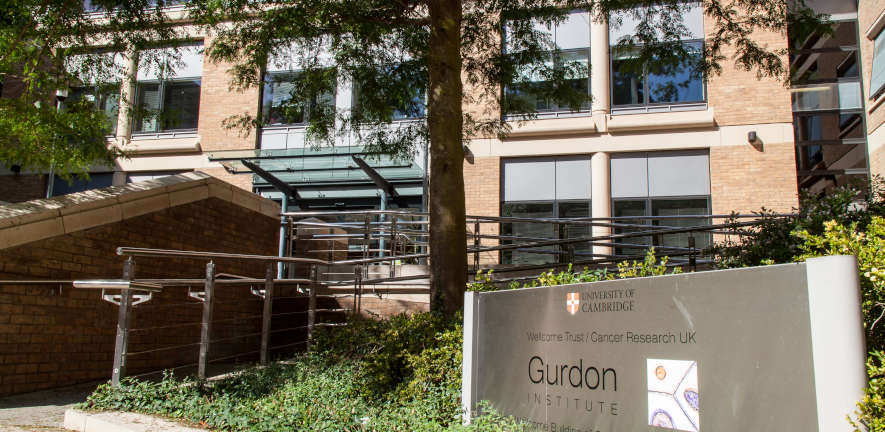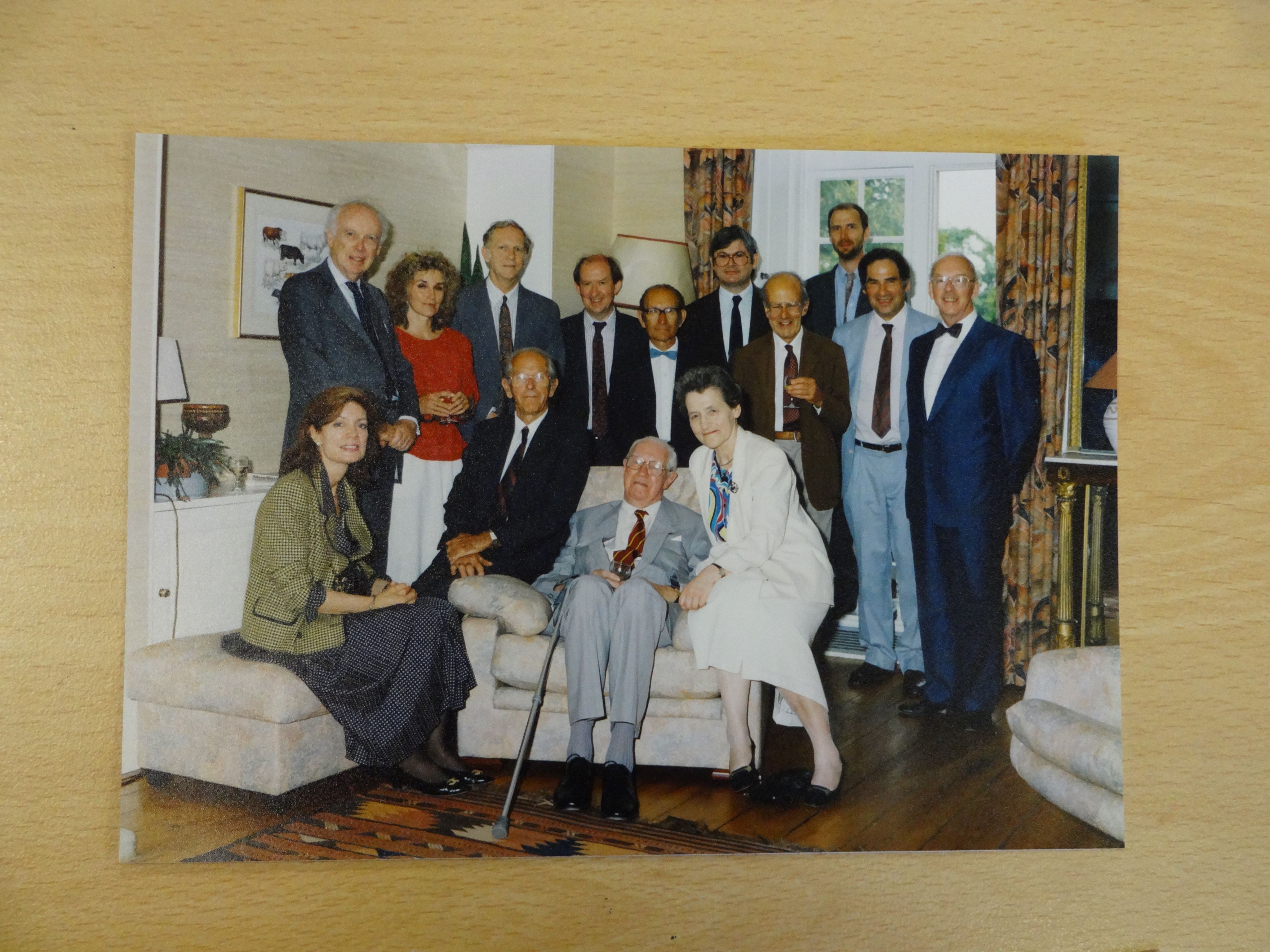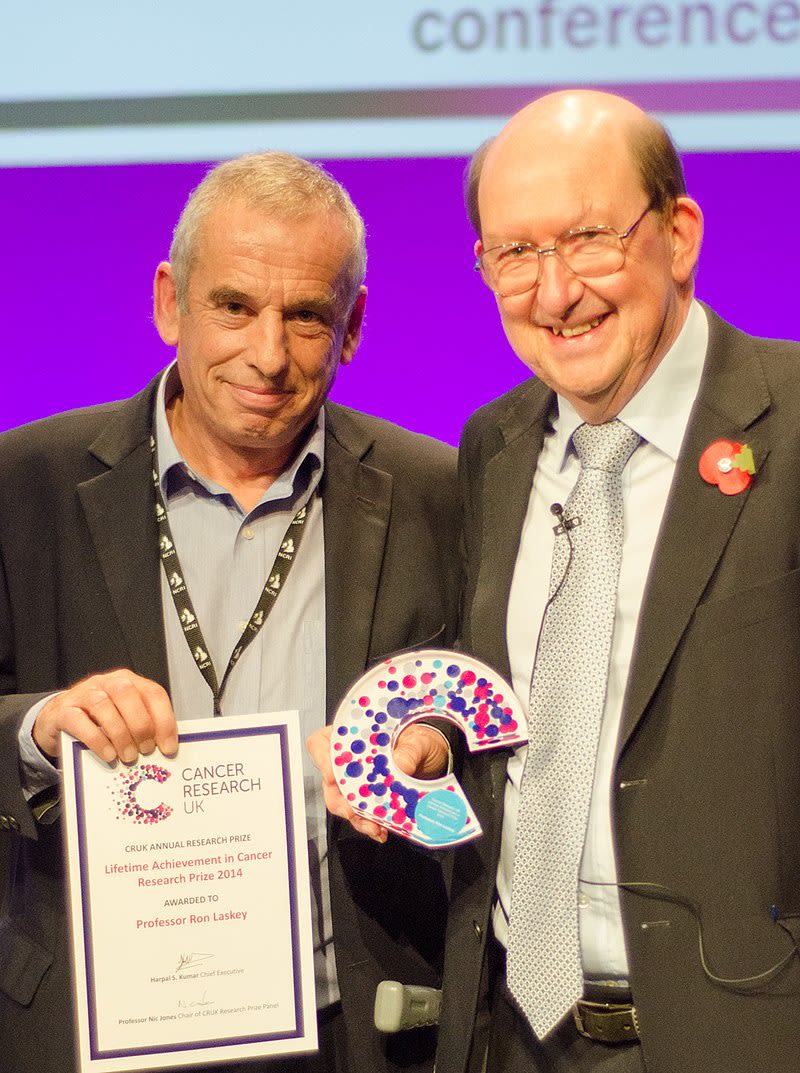"I've been hooked ever since"
Award-winning cell biologist Professor Ron Laskey explains how a Sixth Form science class set in motion a 60-year career in genetic innovation.

In the sort of moment which teachers’ dreams are made of, Professor Ron Laskey still remembers his first ever Sixth Form Biology class in 1960.
“One of the first things I came across was DNA and its structure. I was hooked, and have been hooked ever since on that as an area to work on,” says the cell biologist and cancer researcher, who has received a CBE for Services to Science, and a Cancer Research UK Lifetime Achievement Prize in Cancer Research.
Though he points out that he was “too young to be excited by the discovery of the DNA structure,” in 1953 when he was eight years old, that breakthrough shaped Ron’s career and the field to which he has contributed so significantly.
Following a degree in Zoology at Oxford, Ron completed a PhD under the supervision of John Gurdon, with whom he would later found the Gurdon Institute.
“I worked on transplanting nuclei from adult cells back into eggs without nuclei, to see if they had retained all the genetic information. Which was an exciting project to be doing in the 1960s!”
Three years as a postdoc in London at the Imperial Cancer Research Fund (now Cancer Research UK) gave Ron the opportunity to study viruses and their effects on cells.
“While there, John Gurdon had moved to the MRC Laboratory of Molecular Biology in Cambridge, and a year after he had moved there I joined him at his invitation and set up my own lab, initially within John’s space.”

Completing the experiments they had begun together transplanting the nuclei of adult skin cells, Ron then “went off in several other directions”, including exploring how viruses could be used to understand cell function.
But sometimes the most significant encounters in a scientific career are those which do not fit neatly into a CV.
“In between Oxford and London I had six weeks in Cold Spring Harbor on Long Island, where to my amazement I was immediately invited to dinner by Jim and Elizabeth Watson. Jim clearly wanted to pick my brains on what was going on in British science, and was very supportive ever since. And when I went to the LMB, Francis Crick was my head of division jointly with Sidney Brenner (who won the Nobel Prize for Medicine in 2002).”
Ron’s career, as he explains, has focused on the cell nucleus, the site of DNA production. Careers like his, and the transformations in human understanding which they have made possible, have shaped and been shaped by a sequence of dramatic developments in the field of genetics over the past 80 years.
“Genetics has advanced in sudden leaps forward. The first was discovering that DNA was the genetic material, which pre-dated Watson and Crick and was discovered in the 1940s, and was the first big cornerstone of what happened next. Then the structure of DNA immediately showed how genetic information was passed from one cell to another. That was a massive advance because it showed that the separation of the two strands provided templates for making the next two strands. Genetics suddenly became tangible.”

A celebration of the 40th anniversary of the discovery of the structure of DNA, in 1993. Standing (left to right): James Watson, Priscilla Barrett, Michael Berridge, Ron Laskey (Darwin Fellow), Cesar Milstein (Darwin Fellow), Alan Fersht (Honorary Fellow), Max Perutz (Honorary Fellow), Peter Goodfellow, Gabriel Horn and Hans Kornberg Sitting (left to right):Elizabeth Watson, Fred Sanger, (Lord) Alec Todd, Olga Kennard (Honorary Fellow and later Lady Burgen)
A celebration of the 40th anniversary of the discovery of the structure of DNA, in 1993. Standing (left to right): James Watson, Priscilla Barrett, Michael Berridge, Ron Laskey (Darwin Fellow), Cesar Milstein (Darwin Fellow), Alan Fersht (Honorary Fellow), Max Perutz (Honorary Fellow), Peter Goodfellow, Gabriel Horn and Hans Kornberg Sitting (left to right):Elizabeth Watson, Fred Sanger, (Lord) Alec Todd, Olga Kennard (Honorary Fellow and later Lady Burgen)
Within the timespan of Ron’s own working life, one particular breakthrough stands out.
“There are lots of important steps like solving the genetic code, but the one that really blew me away completely was in 1970. At the end of my six weeks in Cold Spring Harbor there was a symposium on tumour viruses, and there was one talk in the abstracts which was so totally misplaced that I felt terribly sorry for the poor graduate student who was being asked to give a talk on some strange enzymes of bacteria, at a meeting which was entirely about viruses that cause tumours in animals.
“It was one of the most mind-blowing talks I ever heard, because what she had done in her PhD was show that a group of enzymes that protect bacteria from invading DNA was able to cut DNA at precise sites, and you could therefore construct a map of DNA. This was totally transformative. It was utterly amazing, and I’ve never forgotten that talk. It meant that DNA was no longer a long piece of string with no landmarks – there were landmarks, road signs, all sorts of things along it. The possibility of it making sense arose.”
Ron has pursued a lifelong curiosity to understand what tells cells when to divide and when not to, a focus which he says he has sometimes followed in “some esoteric ways”. For many years his research made extensive use of frog eggs which, he explains, act as “a ready-made cell proliferation machine – in the time that a human cell divides once to make two cells, a frog egg has made thousands of cells”.
The realisation in 1998 that protein markers which he had identified could be used to identify cells which are dividing when they shouldn’t be has since been used in screening for several forms of cancer.
In 1982 Ron accepted the position of Charles Darwin Chair of Animal Embryology at Cambridge, and shortly afterwards was asked by César Milstein to become a Fellow at Darwin.
“Darwin is a delightfully inclusive environment. I have to say that one of the things that attracted me to Darwin was that it was less hierarchical than the other Colleges which had approached me, and it also recognised that partners exist, and can be entirely suitable for bringing into College at frequent intervals, which not all Colleges recognised! I’m delighted that I did come to Darwin. In fact I knew that I wanted to, but didn’t know if I could take an initiative to try. Just in time Darwin asked me!”
The Gurdon Institute, which Ron helped to found as an Institute for the Study of Cancer and Developmental Biology with John Gurdon in the late 1980s, is today a world-leading centre of research. While the impact of its work, and his own individual contributions to science, will have lasting and momentous benefits for humanity, it is the Institute’s role in fostering the talents of other scientists which Ron cites as his proudest legacy.
“All the original young group leaders that we hired to set up new cancer research groups in the Gurdon Institute became Fellows of the Royal Society before they were 50, which was enormously satisfying. I’m proud of the people I’ve passed the torch onto, who’ve done some very good things, and are continuing to do good things.”

